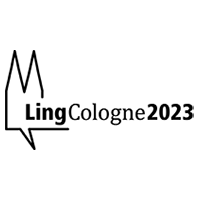The effect of eye gaze and sentence mode in turn-taking prediction
Kristin Haake
University
In natural dialogues, the average gap between turns has been found to be around 200 msec (Sacks et al., 1974). As this is shorter than the time needed to plan an utterance, it is generally assumed that interlocutors anticipate each other’s turn ends. It has been debated which cues interlocutors use to make these predictions (de Ruiter et al., 2006; Casillas & Frank, 2013). Based on this, the current study evaluates the effect of eye gaze as one of multiple potential visual cues and sentence mode (declarative vs. interrogative) on the prediction of turn ends. 29 adults participated in a reaction time experiment. Their task was to watch a video of dialogues containing multiple turns between two animated characters and to press a button as fast as possible every time a turn was finished. We crossed the factors sentence mode and gaze (from the speaker to the listener) in the final utterance of each turn. The results showed that the interrogative over the declarative sentence (p < .0001), as well as gaze over no gaze (p < .0001), caused a significantly faster reaction. Moreover, the interaction between both cues was significant (p < 0.01) due to gaze making a difference for sentences in a declarative mode more than for sentences in an interrogative mode (see figure 1). We conclude that adults use both sentence mode and gaze to predict turn-endings. This was the case even though eye gaze was manipulated without other visual cues that usually accompany it in more natural settings.
References
- Casillas, M., & Frank, M. (2013). The development of predictive processes in children's discourse understanding. In Proceedings of the annual meeting of the Cognitive Science Society (Vol. 35, No. 35).
- De Ruiter, J. P., Mitterer, H., & Enfield, N. J. (2006). Projecting the end of a speaker's turn: A cognitive cornerstone of conversation. Language, 82(3), 515-535.
- Sacks, H., Schegloff, E. A., and Jefferson, G. (1974). A simplest systematics for the organization of turn- taking for conversation. Language 50, 696–735. doi: 10.1353/lan.1974.0010
